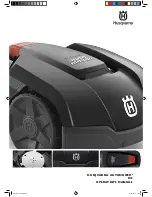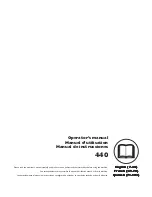
Airbag System
This vehicle has the following
airbags:
•
A frontal airbag for the driver.
•
A frontal airbag for the right front
passenger.
The vehicle may have the following
airbags:
•
A seat-mounted side impact
airbag for the driver.
•
A seat-mounted side impact
airbag for the right front
passenger.
•
A roof-rail airbag for the driver
and the passenger seated
directly behind the driver.
•
A roof-rail airbag for the
right front passenger and the
passenger seated directly behind
the right front passenger.
All of the airbags in the vehicle will
have the word AIRBAG embossed in
the trim or on an attached label near
the deployment opening.
For frontal airbags, the word
AIRBAG will appear on the middle
part of the steering wheel for the
driver and on the instrument panel
for the right front passenger.
With seat-mounted side impact
airbags, the word AIRBAG
will appear on the side of the
seatback closest to the door.
With roof-rail airbags, the word
AIRBAG will appear along the
headliner or trim.
Airbags are designed to supplement
the protection provided by safety
belts. Even though today’s airbags
are also designed to help reduce the
risk of injury from the force of an
inflating bag, all airbags must inflate
very quickly to do their job.
Here are the most important things
to know about the airbag system:
{
CAUTION
You can be severely injured or
killed in a crash if you are not
wearing your safety belt — even if
you have airbags. Airbags are
designed to work with safety belts,
but do not replace them. Also,
airbags are not designed to deploy
in every crash. In some crashes
safety belts are your only restraint.
See When Should an Airbag
Inflate? on page 2-26.
Wearing your safety belt during a
crash helps reduce your chance of
hitting things inside the vehicle or
being ejected from it. Airbags are
“supplemental restraints” to the
safety belts. Everyone in your
vehicle should wear a safety belt
properly — whether or not there
is an airbag for that person.
Seats and Restraints
2-23
Summary of Contents for 2010 Vibe
Page 6: ... NOTES vi Introduction ...
Page 20: ... NOTES 1 14 Keys Doors and Windows ...
Page 82: ... NOTES 3 6 Storage ...
Page 84: ...Instrument Panel Overview 4 2 Instruments and Controls ...
Page 108: ... NOTES 4 26 Instruments and Controls ...
Page 114: ... NOTES 5 6 Lighting ...
Page 134: ... NOTES 7 6 Climate Controls ...
Page 192: ...When you open the hood on the 2 4L L4 engine this is what you see 9 8 Vehicle Care ...
Page 268: ... NOTES 9 84 Vehicle Care ...
















































